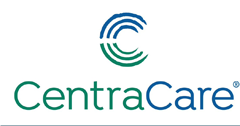Document Type
Article
Publication Date
9-2007
Abstract
OBJECTIVES:
We sought to identify the impact of cardiac resynchronization therapy (CRT) on atrial tachyarrhythmia (AT) susceptibility in patients with left ventricular (LV) systolic dysfunction in whom worsening heart failure (HF) resulted in upgrade from conventional dual-chamber pulse generator to cardiac resynchronization therapy-defibrillator (CRT-D).
BACKGROUND:
Cardiac resynchronization therapy with a defibrillator improves survival rates and symptoms in patients with LV systolic dysfunction but little is known about its effects on AT incidence in the same patient population.
METHODS:
Twenty-eight consecutive HF patients who underwent device upgrade to CRT-D were included. Patients had > or =2 device interrogations in the 1 year before upgrade and > or =3 interrogations in the 18- to 24-month follow-up after upgrade. Echocardiographic parameters were assessed before and at 3 to 6 months after CRT-D. Additional observations included number of hospital stays, HF clinical status, and concomitant pharmacological therapy. By virtue of this study design, each patient served as his/her own control. Statistical analysis was performed by 2-tailed paired t test and with nonparametric tests where appropriate.
RESULTS:
Within 3 months after CRT, the number of HF patients with documented AT decreased significantly from the immediate pre-CRT value and tended to decline with time. At 1-year follow-up, 90% of patients were AT-free compared with 14% of patients 3 months before CRT (p < 0.001). Furthermore, the number of AT episodes/year and their maximum duration decreased after CRT (mean +/- SD; 181 +/- 50 vs. 50 +/- 20.2, p < 0.05, and 220.8 +/- 87 s vs. 28 +/- 21 s, p < 0.05, respectively). Finally, CRT was associated with improved LV ejection fraction (mean +/- SD; from 26 +/- 5.3% to 31 +/- 7%, p < 0.001) and reduced number of HF or arrhythmia hospital stays (p < 0.05).
CONCLUSIONS:
Our findings support the view that CRT might decrease AT susceptibility in HF patients with LV systolic dysfunction
Recommended Citation
Yannopoulos, Demetris; Lurie, Keith MD; Sakaguchi, Scott; and Milstein, Simon MD, "Reduced Atrial Tachyarrhythmia Susceptibility After Upgrade of Conventional Implanted Pulse Generator to Cardiac Resynchronization Therapy in Patients with Heart Failure" (2007). Articles. 43.
https://digitalcommons.centracare.com/articles/43

